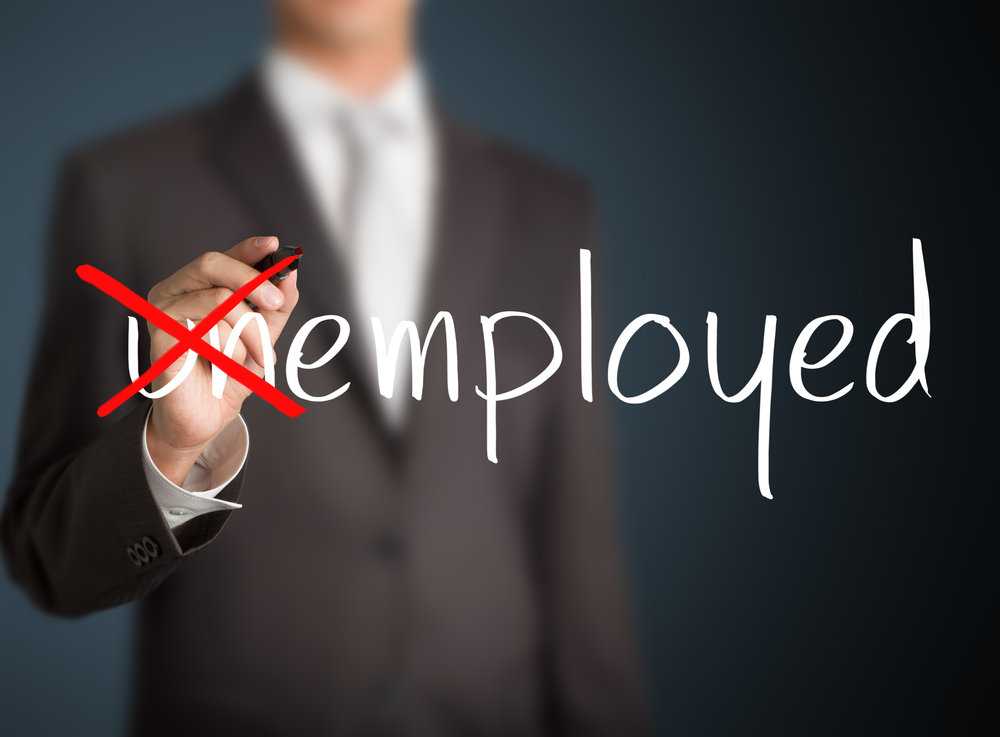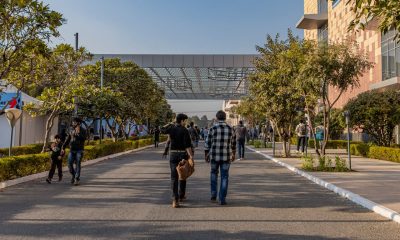Breaking
Why many aren’t celebrating low US unemployment
WASHINGTON — The unemployment rate no longer seems to reflect America’s mood.
Friday’s strong jobs report showed that the jobless rate – the most closely watched gauge of the economy’s health – is down to 5.8 percent. A year ago, the rate was 7.2 percent. Five years ago, it was 10 percent.
It’s the kind of sustained decline that would normally suggest a satisfied public.
Not so much anymore. After Tuesday’s midterm elections, exit polling showed how little falling unemployment has resonated. Most voters said they cast their ballots out of fear for the economy, stripping the Democrats from the Senate majority and implicitly rejecting President Barack Obama.
Many Americans don’t feel they’ve benefited from falling unemployment any more than they have from a sustained rise in the stock market or from solid U.S. economic growth.
Some hints of their discontent can be found within an otherwise glowing jobs report for October: Wages that are barely growing and a stubbornly low proportion of adults who either have a job or are looking for one.
“Underneath the surface, things are not good,” said Michael Mandel, chief economic strategist at the Progressive Policy Institute. “Both Democrats and Republicans would be making a mistake if they looked at the unemployment numbers and didn’t understand why voters are angry.”
Is there solid evidence that the economy is better? Definitely.
Home values have recovered from their recession-induced lows, according to real estate groups. Government figures show that fewer and fewer workers are being laid-off. Consumers punched the accelerator on auto sales this year. And the stock market has kept up its stampede to record highs.
But the jobs report contains clues to why many voters shrugged off those positive trends.
Consider wages. Workers’ pay usually outpaces inflation once the unemployment rate dips beneath 6 percent. That’s because when fewer people need to look for jobs, employers must raise pay to attract the most desirable among them.
Even with 5.8 percent unemployment and even though more than five years have passed since the Great Recession officially ended, this phenomenon has yet to take hold. Most workers’ pay is barely keeping up with historically low inflation.
“People aren’t looking at the statistical aggregates,” said Bill Galston, a senior fellow at the Brookings Institution. “They care about their standard of living, and most Americans think their standard of living has declined.”
Look, too, at the percentage of adults either working or searching for work. It’s a measure called labor force participation. The government counts people without jobs as unemployed only if they’re seeking work. If more people stop looking, labor force participation falls.
At 62.8 percent, the U.S. participation rate hasn’t budged over the past 12 months. And it’s down a sharp 3.6 percentage points from 2007. That means a lower proportion of Americans are engaged in the job market and benefiting from the economic upswing.
Some of the decline in participation stems from retirements by the oldest of the vast baby boom generation. But not all.
Mandel reasons that much of the decline is due to people who want to work but are no longer actively searching. As long as a large such pool of potential workers exists, it will put downward pressure on wages.
Since 2007, the participation rate has fallen disproportionately in three critical states where Democratic incumbents lost Tuesday, costing their party control of the Senate: Arkansas (-5.9 percentage points), Colorado (-5.3 points) and North Carolina (-4.7 points), each of which will now be represented in the Senate by a Republican.
Voters feel firsthand the consequences of these statistics, Mandel said. “Members of their family and friends don’t have a great choice of jobs, let alone well-paying jobs.”
Julie English, a 54-year-old office manager from suburban Denver, voted for all of Colorado’s Republican candidates, including the winning Senate challenger, Cory Gardner. She said the country was headed the wrong way economically.
“What the Republican candidates were saying is more the direction I want the country to go in,” she said.
This year, employers have added more than 2 million jobs, including 214,000 in October. Yet meaningful pay raises remain scarce.
Wages averaged $20.70 an hour for most workers last month, a tepid 2.2 percent gain over the past 12 months.
The picture looks bleaker still for workers at auto plants, steel mills, and similar factories. If you go back to October 2009 and adjust for inflation, these workers are now earning on average $1 less an hour, according to the Labor Department.
People in the professional services sector – everyone from managers to temporary workers – now earn on average 80 cents less an hour over the same period. An average construction worker makes 59 cents less an hour. Retail employees earn a penny less.
At best, this essentially leaves incomes stuck in place – a trend that ripples through the economy as fewer people buy homes and more worry about paying college tuition and saving for retirement.
Post-election polling commissioned by The Associated Press of thousands of voters backs up those concerns. Roughly two-thirds of those surveyed described the economy as “getting worse” or “staying about the same.” And 78 percent declared themselves worried about the direction of the economy.
Not all those negative sentiments can be explained solely through data about wages and labor force participation. Opinions about the economy are also linked to political affiliation. Polling by the Gallup Organization shows that Democrats are largely positive about the economy, and their confidence has risen over the past year as the unemployment rate has dropped. By contrast, sentiment remains negative among Republican and independent voters.
Yet until wages rise meaningfully, the negativity stemming from political beliefs may persist.
Many economists doubt that wages will rise solely from a falling unemployment rate. Instead, it could take a rising proportion of people working or looking for work. When employers are forced to compete for hires, they’re compelled to raise pay, said Patrick O’Keefe, director of economic research at CohnReznick.
Some data related to economic productivity and employee costs suggest that wages could pick up. But no one should expect any sudden acceleration.
“Wages will remain sluggish for some time because of the lack of bargaining power,” O’Keefe said.
AP economics writer Christopher S. Rugaber contributed to this report.






















